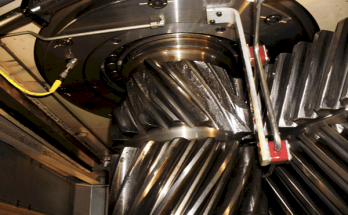Key Takeaways
- Automotive electronics are drastically improving vehicle safety, comfort, and energy efficiency.
- Technological integration leads to more brilliant, more connected cars on the road.
- Advanced sensors, driver-assist systems, and software play a critical role in modern vehicles.
- Consumer expectations grow as vehicles adopt and rely on new digital features.
- Staying updated on automotive trends is vital for drivers, manufacturers, and industry professionals.
Table of Contents
- The Rise of Electronics in Vehicles
- Pushing Boundaries: Safety and Performance
- Driving Toward Energy Efficiency
- The Move to Smart, Integrated Cars
- How Software and Sensors Power Modern Cars
- Meeting and Exceeding Consumer Demands
- Future Trends to Watch in Automotive Electronics
- Resources for Updates on Automotive Innovations
The Rise of Electronics in Vehicles
The explosive growth of automotive electronics has largely driven modern vehicles’ transformation. Think back, just twenty years ago, most vehicles operated with only basic digital radios and analog dials. Today’s vehicles feature deeply integrated systems, from interactive touchscreens to fully digital instrument clusters, placing advanced technology at the center of the driving experience. Notably, the rise of electronics has touched all automotive market segments, with components designed for EVs, hybrid, and traditional internal combustion vehicles. This massive shift shows that electronics are inseparable from daily commuting and long-haul journeys.
The auto industry continues pouring resources into research and development, prioritizing more intelligent and efficient electronic systems. Sophisticated interfaces and computing power no longer belong just in luxury vehicles—they have trickled down to even budget-friendly compacts and utility vehicles. According to a comprehensive news report on automotive electronics in the EV era, electronics now claim an estimated 40% share of car manufacturing costs, and this figure is poised to climb further as automakers aim to keep up with consumer technology expectations. This arms race to add value through digital features fundamentally changes the automotive landscape and sets the bar higher for manufacturers worldwide.
Pushing Boundaries: Safety and Performance
A new wave of electronic systems has revolutionized safety on the road. Gone are the days when seatbelts and airbags were the primary forms of protection. Today, vehicles have advanced driver-assistance systems (ADAS) powered by complex electronics. These include automatic emergency braking, lane departure warnings, adaptive headlights, and blind spot monitoring. Such technologies rely on interconnected sensors, cameras, and radar—a virtual safety net that senses, evaluates, and reacts to potential hazards moments before the driver does. Statistical data from the National Highway Traffic Safety Administration notes that vehicles equipped with forward crash prevention systems see up to a 50% drop in rear-end collisions, illustrating the tangible benefits of electronic intervention in driving scenarios.
Performance is another area where electronics have become a game changer. At a mechanical level, electronics now control fuel injection timing, engine load balancing, and even continuously variable transmission adjustments to maximize power and efficiency. Dynamic traction and electronic stability control allow drivers to remain safe and in control in inclement conditions, while adaptive suspension systems actively adjust ride comfort on the fly. The result? A driving experience that is safer, significantly more enjoyable, and responsive, whether navigating city traffic or tackling a mountain road.
Driving Toward Energy Efficiency
Energy efficiency might once have been a footnote in vehicle design, but today it stands center stage—and electronics are the maestros conducting the performance. With the rise of hybrid and electric vehicles, sophisticated electronics control every aspect of energy consumption, storage, and recovery. Intelligent battery management systems ensure that batteries for electric vehicles charge optimally and last longer, using real-time data to monitor cell health and adjust charging cycles as needed. Regenerative braking delivers power back to the battery every time the brakes are pressed, an innovation made possible by high-speed processors calculating energy flows in milliseconds.
These advancements are crucial for reducing emissions and alleviating range anxiety among electric vehicle drivers. In addition, microcontrollers and power optimization algorithms determine when to switch between electric and fuel power in hybrids for ultimate efficiency. This means stretching more miles per gallon—or kilowatt-hour for the everyday driver, resulting in real cost savings and environmental benefits. As sustainability becomes an ever-greater priority, electronic innovation ensures the auto industry can meet ambitious regulatory targets while satisfying eco-conscious consumers.
The Move to Smart, Integrated Cars
Today’s vehicles are no longer just modes of transportation; they are innovative platforms designed to interact with the broader world. Electronic integration links navigation systems with driver-assist features, merges climate controls with mobile apps, and syncs in-car entertainment with personal playlists and streaming services. The seamlessness of these connections means drivers can listen to navigation directions while answering a call without ever taking their hands off the wheel or their eyes off the road.
Smart integration even extends beyond the car itself. Connected vehicle technology enables cars to communicate traffic and road information to each other and even to city infrastructure. This means one car’s detection of slippery roads or sudden braking can alert others nearby. It’s not just about convenience—these digital layouts are the first steps toward the widespread adoption of safer, more efficient autonomous vehicles, and they have the potential to drastically reduce road congestion and accidents in the years ahead.
How Software and Sensors Power Modern Cars
Underlying every impressive feature in today’s cars is a combination of sensors and software working harmoniously. Ultrasonic sensors manage parking and obstacle avoidance, while high-resolution cameras interpret road signs, traffic lights, and pedestrians. Radar and LIDAR technologies allow vehicles to “see” well beyond what the human eye can, detecting objects around corners and in poor visibility conditions. Meanwhile, centralized software platforms process this flood of sensor data in real time, creating a virtual representation of the environment and making split-second decisions for steering, braking, or accelerating.
The sophistication of these systems continues to grow, propelled by demand for safer, more autonomous vehicles. Industry commentary summarizes that automakers are racing to refine and enhance software and hardware to deliver reliable performance in increasingly complex conditions. The result is a drastic improvement in how vehicles react to their surroundings, improving both safety and comfort for the driver and passengers.
Meeting and Exceeding Consumer Demands
The expectations placed on modern vehicles have never been higher. Drivers want cars that offer intuitive user experiences, seamless connectivity to smartphones and smart home devices, and automated convenience features such as remote start or pre-conditioned cabins. Voice control, wireless charging pads, and customizable ambient lighting are no longer luxury add-ons—they’re becoming expected features in new vehicles.
Automakers have responded by investing in innovation that doesn’t just meet, but anticipates needs. Advanced diagnostics alert owners in real time if something requires attention, and over-the-air software updates allow cars to stay up-to-date with the latest post-sale features. The industry-wide focus on convenience and user experience shapes how buyers choose their next vehicle, pushing manufacturers to prioritize innovation and simplicity in design.
Future Trends to Watch in Automotive Electronics
With the breakneck pace of technological advancements, the next decade in automotive electronics promises even greater transformation. Artificial intelligence is on track to play a bigger role in vehicle automation, learning from driver behavior and road conditions to personalize every journey. Advanced connectivity, enabled by 5G networks, will see vehicles sharing data with each other and smart cities, improving route management and safety.
- AI-powered autonomous driving for greater safety and efficiency
- Wireless charging to support longer-range electric vehicles
- Personalized digital ecosystems that adapt to each driver’s preferences
- Advanced V2X communication creates seamless urban mobility networks
With regulatory changes encouraging more eco-friendly mobility and the evolution of car ownership models, it’s clear that electronics will define the vehicles of tomorrow. Those who stay ahead of these trends—whether drivers, industry professionals, or policymakers—will be best positioned to thrive as the industry evolves.
Resources for Updates on Automotive Innovations
Staying informed is crucial as automotive technology moves at a breakneck speed. Reliable news sources and technology portals provide regular updates on breakthrough developments in automotive electronics. Peer-reviewed journals dissect new advancements and provide unbiased reviews, while automotive forums and user communities often share hands-on experiences and troubleshooting tips.
Regularly exploring news updates, attending tech expos, and subscribing to auto technology newsletters ensures drivers and industry professionals never fall behind. As electronics assume a greater share of vehicle function, keeping pace with the latest trends, safety recommendations, and consumer insights will help prepare for the future of driving, where connectivity, intelligence, and efficiency continue to take the wheel.
also read,Why Indian Retailers Are Turning to RFID for 100% Inventory Accuracy



